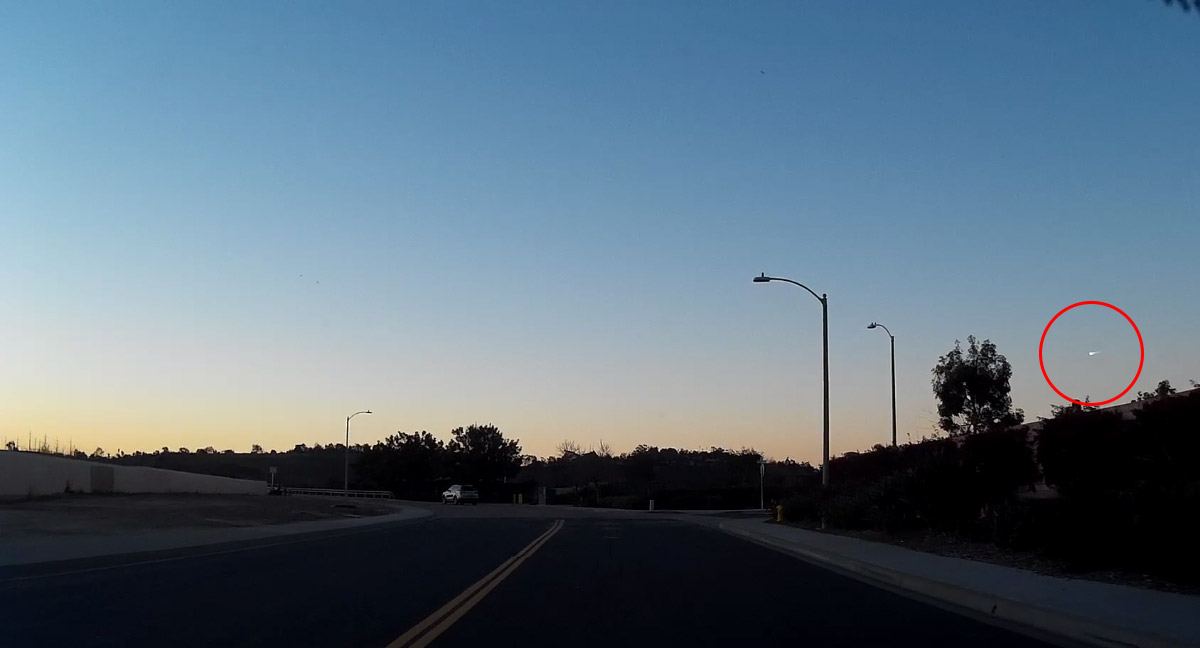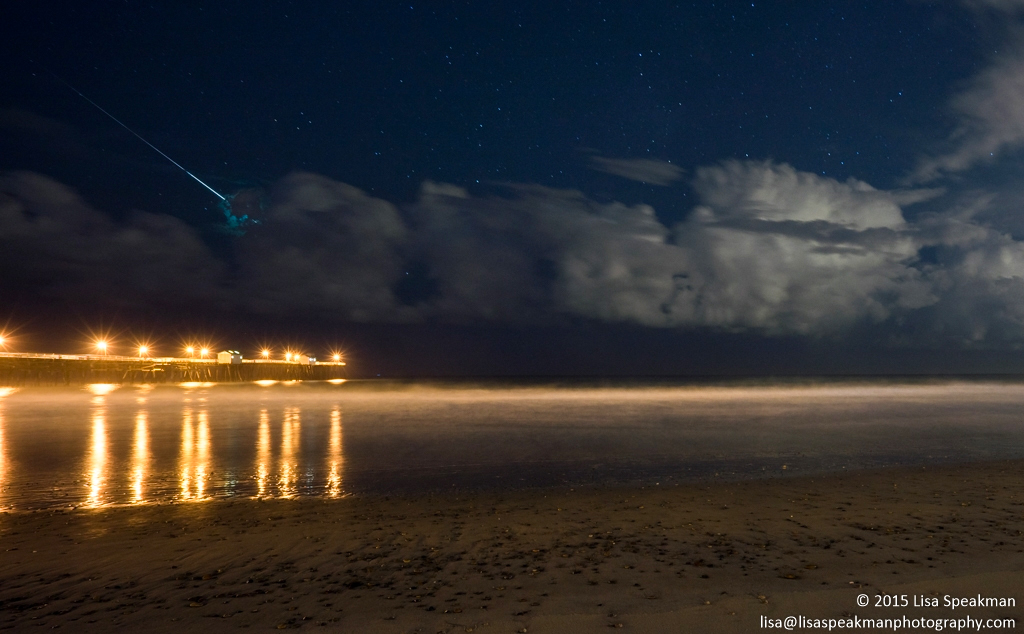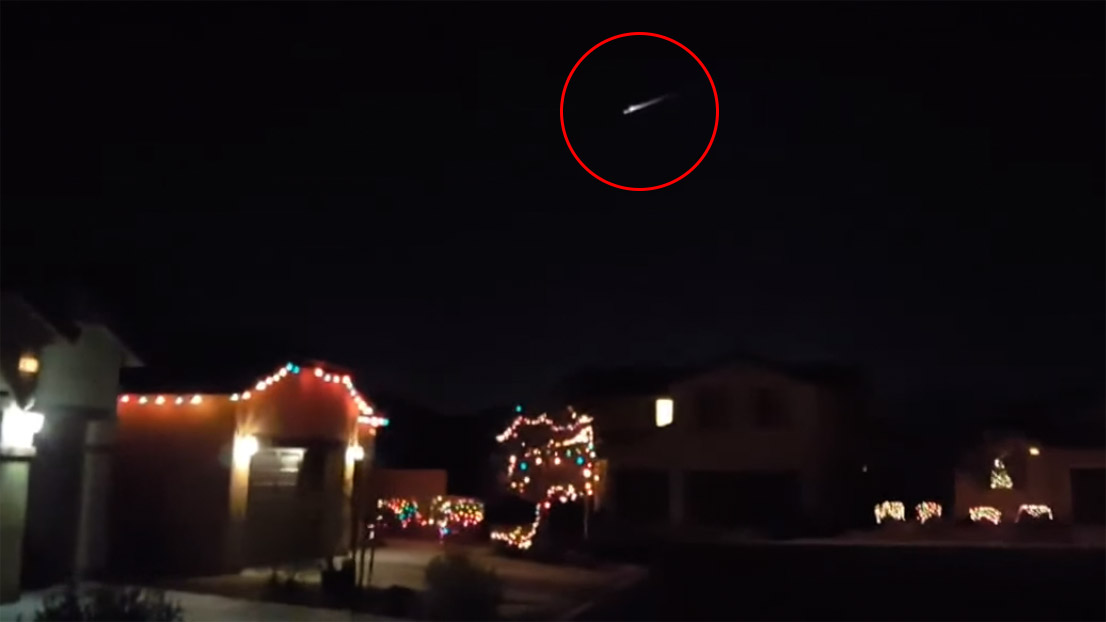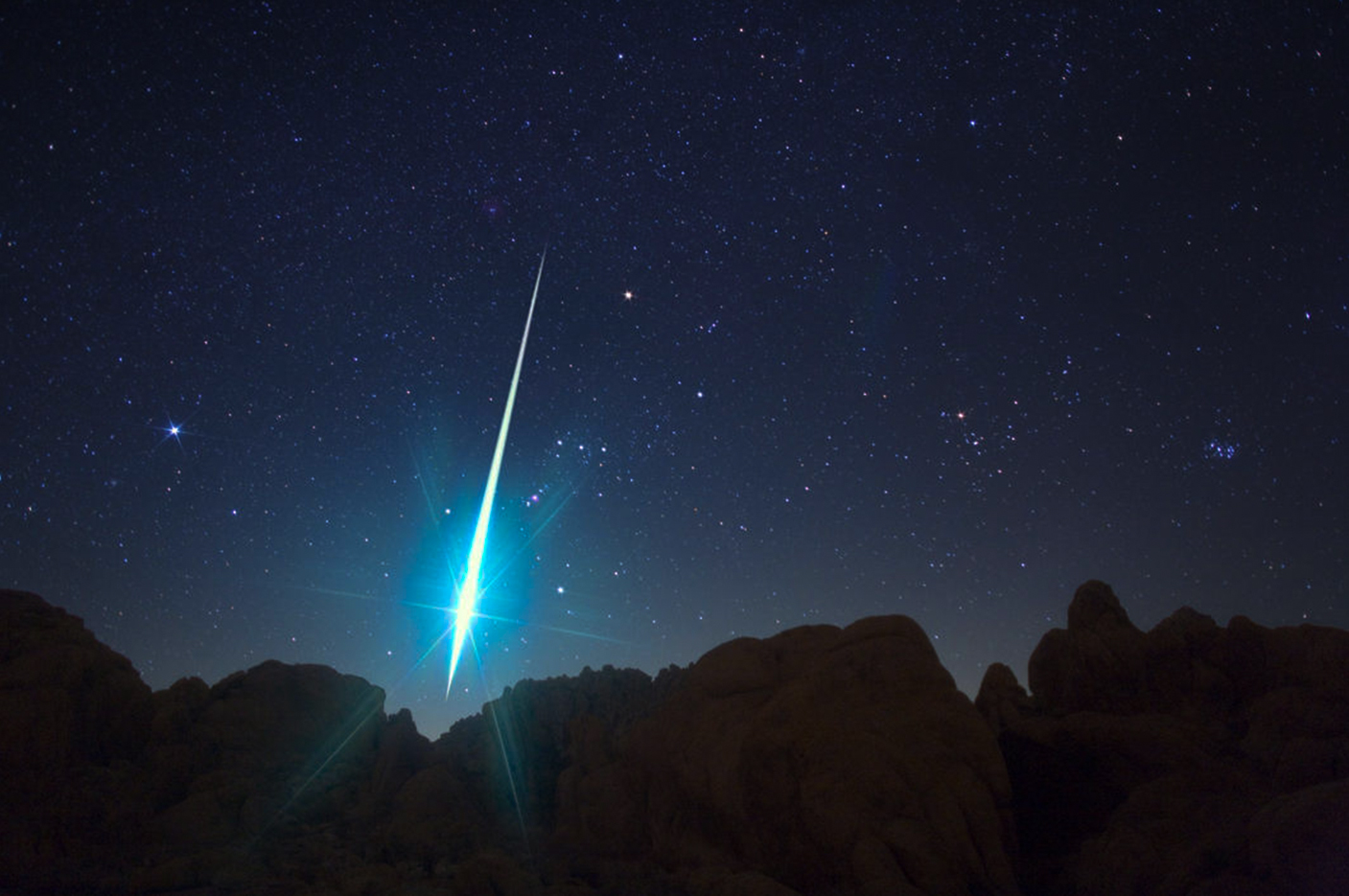
Bright fireball over SoCal morning sky
More than 270 witnesses have reported a large blue-green fireball over southern california on February 11th around 6:35am PT (14:35 UT).

More than 270 witnesses have reported a large blue-green fireball over southern california on February 11th around 6:35am PT (14:35 UT).

During this period the moon reaches its new phase on Monday February 8th. On that date the moon will be located near the sun and will not be visible at night. As the week progresses the waxing crescent moon will enter the evening sky but will not cause any problems to meteor observers.

More than 200 witnesses have reported a large Earth-grazing fireball over Wisconsin and Michigan on February 1th around 6:25pm ET (February 2nd 2016 ~ 00:25 Universal Time).

More than 920 witnesses have reported a large fireball over Pennsylvania on January 30th around 6:16pm ET (23:16 UT). The fireball was seen primarily from Virginia, Washington DC, Maryland, and Pennsylvania, but witnesses from New Jersey, North Carolina, New York, Delaware, Ohio, West Virginia, Kentucky and even Ontario also reported seeing the fireball.

For morning observers the estimated total hourly rates should be near 9 as seen from mid-northern latitudes (45N) and 10 as seen from tropical southern locations (25S). The actual rates will also depend on factors such as personal light and motion perception...

The American Meteor Society has received nearly 130 reports of an extremely bright daylight fireball on Sunday, January 24th, 2016.…

During this period the moon reaches its full phase on Saturday January 23rd. On that date the moon will be located opposite the sun and will be above the horizon all night long. As the week progresses the waning gibbous moon will rise approximately 45 minutes later...

For morning observers the estimated total hourly rates should be near 11 as seen from mid-northern latitudes (45N) and 10 as seen from tropical southern locations (25S). The actual rates will also depend on factors such as personal light and motion perception, etc.

For morning observers the estimated total hourly rates for this week should be near 16 as seen from mid-northern latitudes (45N) and 8 as seen from tropical southern locations (25S).

For morning observers the estimated total hourly rates should be near 16 as seen from mid-northern latitudes (45N) and 8 as seen from tropical southern locations (25S).

As for the Quadrantid meteor shower of 2016, this shower is predicted to peak on Monday morning January 4th over North America and the western Atlantic region. On that morning the 30% illuminated moon will rise at approximately 0200 (2am) local standard time for most observers in the northern hemisphere.

For morning observers the estimated total hourly rates should be near 8 as seen from mid-northern latitudes (45N) and 6 as seen from tropical southern locations (25S). Rates are reduced during this period due to interfering moonlight.

The American Meteor Society received more than 50 reports of a bright object over California, Nevada and Arizona on Tuesday, December 22th around 18:10 PST.

For morning observers the estimated total hourly rates should be near 18 as seen from mid-northern latitudes (45N) and 14 as seen from tropical southern locations (25S).

For morning observers the estimated total hourly rates should be near 70 as seen from mid-northern latitudes (45N) and 30 as seen from tropical southern locations (25S).

The Geminid meteor shower is the favorite of most meteor observers as it usually provides the strongest display of the year. On the peak night (December 13/14) between the hours of 1:00 and 2:00am local standard time (LST)...

The estimated total hourly meteor rates for evening observers this week is near 4 as seen from mid-northern latitudes (45N) and 3 as seen from tropical southern locations (25S).

Active meteor showers are listed for the upcoming week.

For morning observers the estimated total hourly rates should be near 20 as seen from mid-northern latitudes (45N) and 13 as seen from tropical southern locations (25S).

During this period the moon reaches its first quarter phase on Wednesday November 18th. On that date the moon will be located 90 degrees east of the sun and will set near 2300 (11pm) Local Standard Time (LST) as seen from mid-northern latitudes.
The American Meteor Society has logged a record number of fireball reports in the last two weeks. In the whole of 2015 there have been 472 unique fireball events witnessed by 5 or more people each. 172 of those have been logged in the last 11 days.